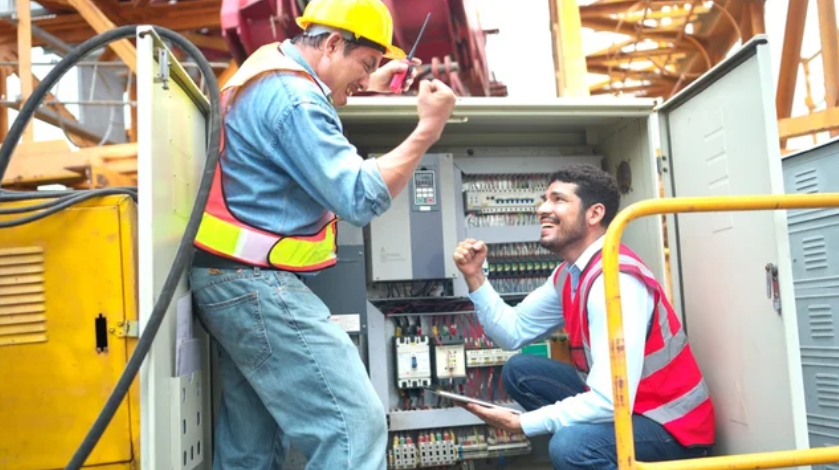
When a Grove crane experiences an electrical fault, it can disrupt an entire job site. Unlike hydraulic leaks or mechanical wear, which often provide clear warning signs, electrical issues can appear suddenly. A crane might function perfectly one day and then fail to start or trigger an unexpected alarm the next. For operators, owners, and technicians, understanding these problems is essential for reducing downtime and maintaining safety.
Why Electrical Failures Are Costly
Grove cranes rely on sophisticated electrical systems for both primary and secondary functions. Batteries power the engine, sensors track load and boom positions, and relays control critical operations. Even small components, like lights or safety alarms, are vital for safe performance.
When these systems malfunction, the crane may stop entirely or operate with reduced functionality. A single damaged wire or corroded connector can disable controls, cause false warnings, or halt hydraulics. These issues lead to costly delays, project setbacks, and potential safety risks.
Typical Electrical Issues in Grove Cranes
Certain electrical faults are more common and can be identified with familiarity.
- Battery and Charging System Troubles
A crane that won’t start or cranks slowly often has a weak battery. An alternator that fails to charge properly can drain power during operation. Loose or corroded terminals can also disrupt power flow. - Faulty Fuses or Relays
A sudden loss of power to sensors, lights, or controls often points to a blown fuse. Relays, which manage high-current systems, can wear out from heat or vibration, causing system failures. - Wiring and Connector Wear
Cranes endure tough conditions, and wiring suffers from constant movement and exposure. Cracked insulation, loose connectors, or pinched wires cause intermittent faults that are difficult to trace. - Sensor or Switch Failures
Sensors for load limits, boom angles, or safety switches are essential for operation. A malfunctioning sensor can trigger shutdowns, false alarms, or inaccurate readings, confusing operators about the crane’s status. - Control Panel Malfunctions
Problems with joysticks, buttons, or circuit boards in the control panel can disrupt specific controls or entire systems. A single faulty switch might affect one function, while broader issues could indicate a wiring or board problem.
Troubleshooting Electrical Faults
Electrical issues can feel complex, but a structured approach simplifies repairs.
- Verify Battery and Charging System
Use a multimeter to check battery voltage and alternator performance. Ensure terminals are clean and tight. - Inspect Fuses and Relays
Replace blown fuses and determine the cause, such as a short circuit. Test relays by swapping them with working ones. - Examine Wiring and Connectors
Look for signs of wear, like frayed insulation or loose connections, especially in high-vibration areas. - Test Sensors and Switches
Compare sensor outputs to the crane’s manual. Replace sensors showing incorrect or erratic readings. - Check the Control Panel
If one control fails, test the switch or joystick. If multiple controls are affected, suspect a circuit board or wiring issue.
This systematic method minimizes guesswork and prevents unnecessary part replacements.
Preventing Electrical Failures
Many electrical issues develop gradually. Proactive maintenance can prevent major problems.
- Regularly clean and secure battery terminals.
- Check wiring during routine inspections to catch wear early.
- Protect connectors from moisture and debris to avoid corrosion.
- Replace aging connectors before they cause failures.
Moisture is a common cause of electrical faults. Sealing connectors and maintaining covers can greatly improve component longevity.
The Value of Spare Parts
Small components like fuses, relays, or sensors can stop a crane’s operation when they fail. Keeping a stock of Grove crane parts on site allows for quick repairs, minimizing costly delays. A dependable crane parts supplier ensures access to genuine or compatible Grove crane parts, ensuring reliable performance and safety.
When to Seek Expert Help
Some electrical faults, like those in control boards or wiring harnesses, require advanced tools and expertise. In these cases, a professional technician is the best choice.
Operators can assist by documenting details about the fault—what happened, which systems failed, and any error codes or lights. This information speeds up diagnosis and reduces repair time.
Technician Insights
Technicians often describe electrical faults as tricky because symptoms can be deceptive. A sensor issue might look like a hydraulic problem, or a battery failure might mimic a control issue. A step-by-step approach—checking power, fuses, wiring, and sensors—resolves most problems efficiently.
Final Thoughts
Electrical systems are the lifeline of Grove cranes. Failures in batteries, fuses, wiring, or sensors can halt operations, regardless of the crane’s mechanical strength. By understanding common issues, maintaining systems regularly, and keeping Grove crane parts available through a trusted crane parts supplier, operators can reduce disruptions. For complex faults, professional technicians provide accurate repairs. With proper care, electrical issues can be managed, ensuring Grove cranes remain safe, reliable, and ready for work.






